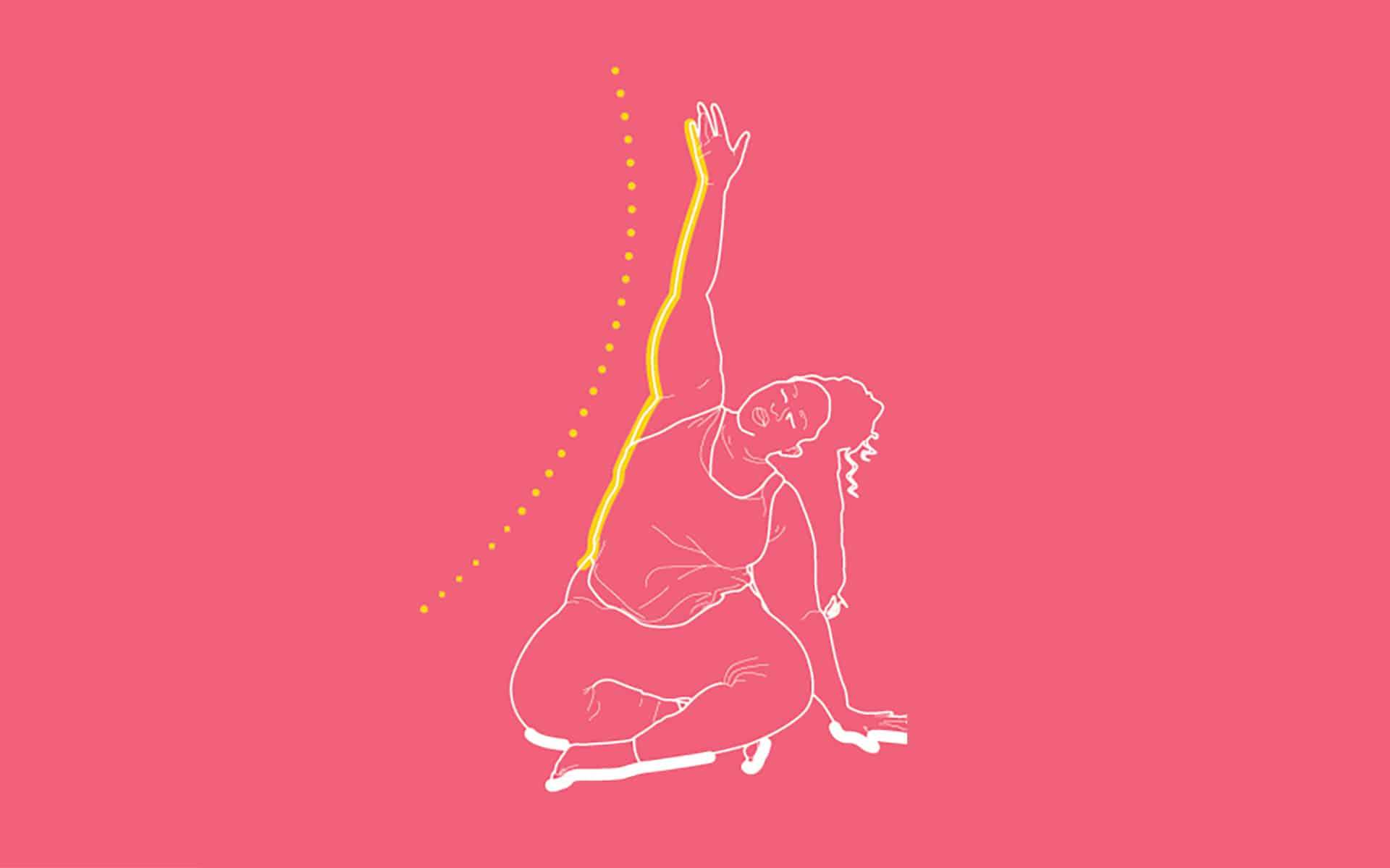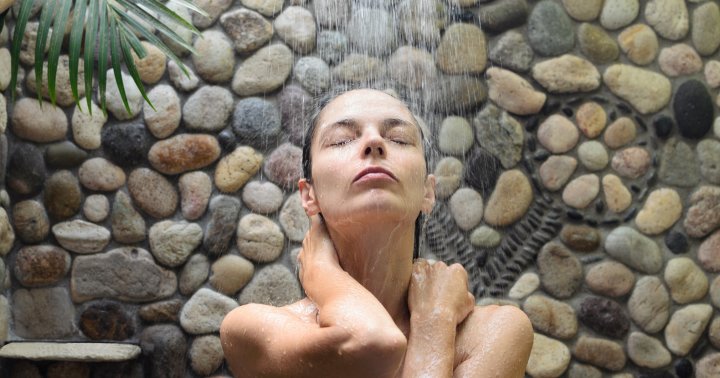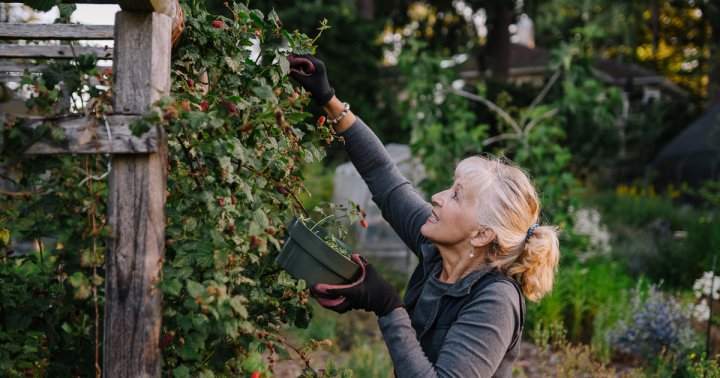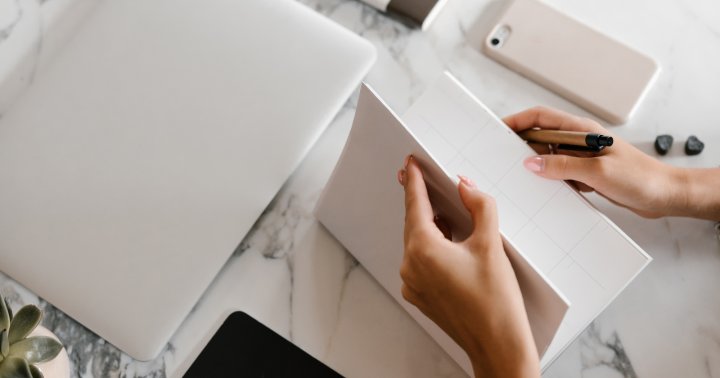7 Mindful Movement Practices for Daily Life
Top mindful movement experts invite us to come home to the body, get curious about what we find there, and let it nourish us from the inside out. The post 7 Mindful Movement Practices for Daily Life appeared first...

A few months ago, my partner and I were moving across town from one apartment to another. A gaggle of wonderful friends had volunteered to help us on moving day. As we carried box after cardboard box down several flights of stairs, I found myself feeling more lighthearted than I had in weeks. The inner static of worrying, planning, and overthinking the move had faded as I shifted my attention toward lifting properly, ascending and descending the steps with care, and physically coordinating with others as we packed up the van. Later I realized that the day’s rather unusual physical activities had reminded me how to tune in to movement in a way I hadn’t done in a long time. My mind and body were finally in harmony, in motion together.
Fortunately, this kind of mind-body awareness is available to us every day, not only “moving day.” As biomechanist Katy Bowman puts it, “Movement is the axis and spine of all human behavior.” It’s part of who we are, and part of how we express who we are. Moving with awareness is a way to embody our intentions, our sense of purpose, and our relationship to those we love and the world around us.
Moving mindfully goes beyond trying to change or control something about our body, as is sometimes the case with exercise. With mindful movement, the practice of being present with the body in motion allows us to attend to—and maybe even enjoy!—the process itself, instead of waiting for the desired results. You can bring that presence while doing a weight-lifting or pilates workout, or strolling with a friend after dinner, or playing soccer, or pushing your child on the swing, or folding laundry. Movement, whether simple or complex, is what life’s made up of. Why not be here for it?
Movement, whether simple or complex, is what life’s made up of. Why not be here for it?
And all of this embodied awareness comes with positive side effects. Contemplative teacher Willa Blythe Baker writes, “Recent studies on interoception (an innate capacity to sense the processes, feelings, and experiences of the interior body, such as your heartbeat, breathing, or hunger) have found a relationship between interoceptive awareness and emotional regulation.” From the butterflies of new love to the heavy ache of grief, we can sense how our emotions are rooted in the body. When we’re able to stay with the curiosity about what our body’s doing and what that feels like in each moment, this in turn improves our ability to navigate our emotions with skill. Becoming more aware and accepting of emotions also creates the possibility, as Zindel Segal describes, of “developing a different relationship to experience, one that is characterized by allowing an experience and letting it be.” When we are regularly in touch with our dynamic nature, our embodied resilience, we no longer feel such a strong need to push anything away.
The teachers and experts in the practices ahead offer a smorgasbord of practices, tips, and inspirations to help you get creative about how you make time for the gift of movement in your daily life. Explore these possibilities; feel what your body craves; shape your movement practice in whatever way serves you right now. May we all move with courage and curiosity, and in ways that nourish our aliveness, both in mind and body.
Introduction by Amber Tucker
7 Mindful Movement Practices for Daily Life
Start Small
Movement is a valuable ally in bringing more calm, focus, and clarity to our state of mind. Gentle movement helps us tune in to the daily routines that we might otherwise go through on autopilot. This not only refreshes our perspective, it refills our cup with gratitude for what, and who, is present with us. Cultivating a spirit of playfulness and appreciation along the way lets us connect more easily with the people we care about, and it grounds and calms our nervous system.
Mindful Movement Practice: A Soothing Yoga Flow to Help You Choose Yourself
Savor this gentle practice as part of your time to simply be present with yourself. Or, invite a loved one to join you and unwind together, if you so choose.
By Dianne Bondy
While some yoga poses aren’t available to everyone, this slow-paced series of stretches includes options to customize each pose. The focus is on listening to your own body and moving in the way that feels best for your body, letting go of any comparisons to what others can do.
Optional Props:
A bolster or cushion to sit on Yoga blocks, books, or paper towel rolls A blanket A bench or a chair without arms Begin by finding a position that feels comfortable for you: maybe sitting cross-legged on your bolster; you can stretch your legs out long and straight, or out wide to the sides; or bring the soles of your feet together, which may be easier on the knees. Take a few minutes to tap into your breath. One option is to close the eyes and take your experience inward. If closing your eyes doesn’t feel safe or comfortable, you can also lower your gaze toward the floor, or toward something in the room in front of you. During this practice, we’ll breathe in through the nose for two, and out through the nose for two, if it feels comfortable. You can also choose to exhale, or both inhale and exhale, through the mouth. As you inhale, sweep your arms up to the sky. Bring your left hand down either to the bolster or to the mat and reach your right fingertips over toward the left. Inhale and bring both arms back up. Exhale and release your right hand down to the mat, and then reach your left fingertips over toward the right. Just swaying side to side, taking a side bend. Lengthen out of the crown of the head, really reach through the fingertips, and slightly turn your chest up to the sky as you move side to side. Let’s explore a couple of Cat and Cow variations, either on the mat or sitting on a bench or chair. From the mat, you’ll want to pad your knees and come onto your hands, fingertips spread out wide. Take your knees wider, soften your belly down toward the mat, squeeze between your shoulder blades—and then round your back up to the ceiling. If putting weight into your knees or hands doesn’t feel appropriate to you, you can sit on the chair or bench, placing your hands on your knees and curling the shoulder blades onto the back. Lift your gaze to the sky, and then as you exhale, round the chest. Repeat 3-5 rounds. Make your way onto your back. Make your way to the floor, and roll over onto your right side and lower yourself down onto your back. Bring the knees in to your heart, one at a time, and gently rock from side to side, just giving your lower back a little massage. Plant your feet firmly on the mat, then cross the right ankle over the left knee. Your left hand rests on the floor alongside your body, or it can rest out to the side like a cactus arm. With your right hand, you can gently press the right thigh away, noticing how that feels in your body. Or you can draw that left knee in toward the chest, holding on to the top leg, flexing through the heel and pressing your lower back into the mat. On an exhalation, plant your left foot onto the mat. Repeat on the other side. Next we’ll do Half Happy Baby. Holding on at the back of the right thigh, bring the knee close to the body. Hold on to the ankle, and lift the sole of the foot to the sky. Or, hold on at the outer edge of the foot and draw your knee back toward the floor. If you’ve been standing or sitting all day, this may be a nice release for tight hips. You can also do this in bed before you get up in the morning. It’s all about what feels best in your body: honoring that energy, that moment, that sensation, that breath. Repeat on the left side. Now, just let your whole body soften into the mat. You can gently tug the shoulder blades underneath you, turning the palms up to the sky, relaxing the jaw, closing the eyes if that feels good, or keeping the gaze soft. For the next few minutes, inhale deeply, and exhale completely. When you’re ready, begin to bring a little movement to your fingers and toes. Whatever makes you feel comfortable and safe and supported in this posture, always choose it for you. Stretching your arms, maybe your legs, rolling your wrists and your ankles, finding what feels good for you, just stretching the body in a way that feels delicious, as you prepare to end your practice.Illustrations by Spencer Creelman
Mindful Movement Practice: A New Kind of Social Movement
With a little creativity, even the most ordinary occasion with friends, family, colleagues, or neighbors can be more lively and playful.
By Katy Bowman
With so many wants and needs in our lives, the need to move our bodies more is often the ball we drop. Yet, until very recently, movement was not a separate “ball” for humans to hold; movement and community were woven into the tasks that made up daily life.
If you’re struggling to find time for movement, see if you can adjust tasks you are already doing to a dynamic version that increases your physical activity—no juggling required.
Try it:
Love time with your partner? Swap a dinner out for a hiking date.
If friends (or art or wine!) are your passion, fill a pack with art supplies and a bottle of your favorite vino (or kombucha, or hot tea) and trek through a park for a DIY sip-and-paint with pals.
Meet a friend for coffee—and take it to go on a garden tour.
Take early-rising toddlers on an outdoor sunrise adventure with a portable breakfast.
Start work meetings with a few team-building exercises that are actually stretches for your team.
Start a dynamic book club, where the conversation is on foot or wheels.
Liven up household chores with a dance party, swinging arms and hips to your favorite tune.
Host an active potluck, where neighbors of all ages play casual games of frisbee or basketball and share food.
Experiment together, and have fun! Before long, infusing your relationships with playful and nourishing movement will become second nature.
Savor the Dance of Cooking
Try out these tips to help you find your own little dance the next time you prepare a meal.
By Lynn Rossy
Delicious is the term used to describe the type of food I hope to eat, but also the way in which I move. Come to a yoga class with me and you will hear me say, “Move in a way that feels delicious.” Delicious means enjoyable, delightful, and pleasant—and we can bring that perspective into the kitchen as we cook.
1. Turn on some music. I love to start the process of cooking by setting the mood. Something upbeat gets my body moving into action.
2. Feel your body moving. There are many movements required in the cooking process. Pay attention to the muscles stretching as you reach for ingredients in the top of the cabinet. Practice your squat as you bend down low. Pay attention to the muscles in your arms as you cut those carrots and knead that bread.
3. Pause for a Breath and a Smell. Cooking can be physically demanding. Pause for a breath and take time to smell the growing aroma of the kitchen. Smile and take your next dance step with curiosity and love.
4. Make it into a Dance. Feel your body moving from place to place as you attend to the food cooking on the stove, glide to the countertop to cut some more vegetables, and to the cupboard for ingredients. If another person is in the kitchen, turn it into a couple’s dance. Honor the space needed for each one of you so you don’t end up spilling the beans on the floor.
Feed Your Flame
There are countless ways we can shift our world for the better—whether it’s volunteering weekly in our communities, engaging someone in a compassionate conversation, joining an activist group, or creating art that envisions what positive change might look like and energizes us to get there. Showing up with our passion and care is strong fuel for joy and purpose. Yet outward actions are not the whole story here. We need to care for ourselves, too: Healing and replenishing ourselves is part of the healing we wish for others. So let your body and your breath support you in flowing, breathing, and deepening your roots so that we can all continue showing up with revolutionary love.
Mindful Movement Practice: Connect With Your Brave Heart
In this seated yoga practice, we cultivate the tools to nurture, strengthen, and give courage to our fearless hearts.
By Boo Boafo
Connect With Your Brave Heart—Boo Boafo
Illustrations by Spencer Creelman
Let Nature Move You
Exploring how it feels to move mindfully outdoors can be a deeply awe-inspiring practice. Even when we’re sitting still, we can sense the movement of nature around us, full of moment-to-moment reminders of the continuous state of growth and life surrounding us. Many of us struggle with climate anxiety and grief. When we move with nature, remembering that as human beings we’re not separate from our environment, we often discover small ways in which we can refocus that anxious energy into connection and gratitude. These, after all, are at the heart of our collective desire to respect and protect our planet.
Mindful Movement Practice: Rest in the Movement of Nature
Tuning in to the natural movement of nature can be very soothing and calming, even in the midst of ongoing challenges. You can do this meditation outdoors, or anywhere.
Rest in the Movement of Nature—Jeanne Corrigal
Mindful Movement Practice: Practice the Power of the Long Exhale
When we lengthen the exhale, we’re better able to find our power and invite a sense of relaxation to high intensity movement. Longer exhales cause the vagus nerve to send a signal to your brain, activating the parasympathetic nervous system (rest and digest) and easing the sympathetic nervous system (fight, flight, or freeze). The technique I share below is one that I practice when engaging in strenuous physical activity and training. This practice has been instrumental in helping me find my flow. With a longer exhale, I find I can do hard things over longer stretches of time and build my overall endurance in my movement practices, whether that be hitting laps on the stairs, running, hiking, climbing, or a high intensity workout.
Practice the Power of the Long Exhale—Georgina Miranda
How to Breathe Into Challenging Movement
Take a few deep breaths in and exhale fully through the mouth, with the intention to get present as you begin your movement practice. Focus on your breath as it passes through the nostrils, and then try exhaling the air from your lungs with pursed lips. Begin to take intentionally longer exhales to get used to the feeling and sensation of what this could be like: Breathe in through your nostrils for a count of 1, 2, 3, 4. Breathe out with pursed lips through your mouth for 1, 2, 3, 4, 5, and (if you can) 6. Be mindful of your capacity so that your next inhale is not a big gasp of air to compensate for over-exhalation. Aim for smooth transitions of inhales and exhales. Once you feel in rhythm with this breath count, you can go deeper into your movement activity. For example, at this stage I might transition from walking to running, or pick up the pace of going up stairs, or increasing the repetition of weights, etc. Over time, work toward a 2 to 1 exhale:inhale ratio. When you are ready to finish your movement practice, start to slow your pace and breath down. Be sure to give yourself a few moments of stillness or stretching with slow belly breathing, to let your heart rate go down and to honor your practice.Open Up to Ease
Movement often contributes to energy, connection, and optimism, but it can equally be a part of our restorative practice. Slow, conscious movements can be a doorway to deeper calm, ease, and the mental and physical rest that so often get edged out of our busy schedules. While it may be counterproductive to do an intense workout close to bedtime, some studies suggest that engaging in mindful movement as you finish your day may result in a significantly improved quality of sleep.
Mindful Movement Practice: 5 Stretches to Ease Your Body into Sleep
In this quick bedtime routine, you’ll stretch and relax areas of your body (and mind!) that may have tightened up during the day.
By Cara Bradley
When we give ourselves a chance to release tension and let go of any wakeful or anxious thoughts at bedtime, we’re setting ourselves up to get a good night’s sleep. These nighttime stretches are a simple form of self-care that lets us meet the next day refreshed and confident. Roll out your yoga mat or a soft blanket, and allow yourself to nod off at the end.
1) Cat/Cow
Stretch your upper back, loosen tension in your spine
Place your hands on the ground beneath your shoulders and your knees on the ground beneath your hips. Keep your back straight and your head forward. As you inhale gently, drop your belly toward the floor, lift your chest, and look forward, arching your spine slightly. As you exhale, bring your face toward your navel while rounding your back upward. Repeat for 3-5 breaths.
2) Deep Lunge
Stretch the front of your hips
From an all fours position, step your right foot forward and slide your left knee further behind you. Place your hands on your knee. Keep your hands on the floor or on your front knee. Hold for 5 breaths. Switch sides.
3) Seated Neck Stretch
Stretch and lengthen both sides of your neck
While seated, bring your right hand over your head and place it on your left ear. Gently drop your right ear toward your shoulder. Hold for 5 breaths. Bring your head back to center gently and switch sides, going easy on your neck when you switch. Hold for 5 breaths.
4) Dynamic Bridge
Stretch the chest, neck, shoulders, and spine
Place your arms flat on the ground by your sides, palms facing down. Place both feet on the floor under your bent knees. Make sure your back is flat and your body feels centered and balanced. Then, as you inhale, lift your hips up toward the ceiling, creating a straight line from your knees, down your thighs, to your chest. If it feels comfortable, interlock your fingers under your body and shimmy your shoulder blades toward each other to open your chest muscles. Hold for 8 deep breaths.
5) Knee to Chest and Twist
Stretch out your low back and hips
Illustrations by Spencer Creelman
Stretch out your legs and slide them together. Hug your right knee into your chest, clasping your fingers around your right shin, to stretch your low back and hips. Hold for 3 breaths. Release your knee and send it to the left for a gentle spinal twist. Turn your gaze to the right. Hold for 3 breaths, then switch sides.
After this last pose, let yourself take a few slow, deep inhales, and a few long, comfortable exhales. When you’re ready, open your eyes and notice how you feel. Slowly get up and crawl right into bed.
Getting Started with Mindful Movement
Riding a bike, lifting weights, sweating it out on a treadmill—each can be a mindfulness practice. Whatever the physical activity, instead of simply working out to master a skill or improve your condition, you can move and breathe in a way that shifts you from feeling busy and distracted to feeling strong and capable.
Read More

 UsenB
UsenB 



















.jpg&h=630&w=1200&q=100&v=6e07dc5773&c=1)











